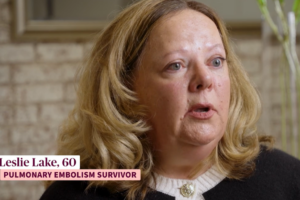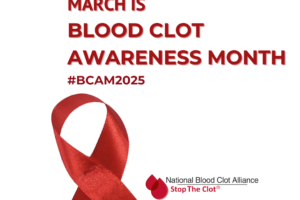Deep vein thrombosis (DVT) and pulmonary embolism (PE): Awareness and prophylaxis practices reported by patients with cancer.
Category: Patient and Survivor Care
Meeting: 2011 ASCO Annual Meeting
Session Type and Session Title: General Poster Session, Patient and Survivor Care
Abstract No: 9101
Citation: J Clin Oncol 29: 2011 (suppl; abstr 9101)
Author(s): F. R. Rickles, E. Varga, A. Brownstein, R. J. Friedman, G. A. Maynard, J. Ansell; George Washington University, Washington, DC; Children’s Hospital of Ohio State University, Columbus, OH; National Blood Clot Alliance, Tarrytown, NY; Medical University of South Carolina, Charleston, SC; University of California, San Diego, La Jolla, CA; Lenox Hill Hospital, New York, NY
Abstract:
Background: The goals of this study were to measure DVT/PE awareness among patients with cancer and to identify gaps in evidence-based prophylaxis reported by these patients.
Methods: A survey was conducted among 500 adults, screened from an online research panel, diagnosed with cancer within 12 months of sampling. Responses from patients who required a hospital stay for treatment (n=206) were compared to responses of patients who were exclusively treated as outpatients (n=294).
Results: Of the 500 patients surveyed, mean age was 58 (range 20-80+), 64% female, and cancer diagnoses included: breast 34%, prostate 10%, lung 9%, skin 8%, colon 5%. Among all respondents, 76% had not heard of a medical condition called DVT and 85% had not heard of PE. Significantly more outpatient respondents were unfamiliar with the terms DVT (85%; p=<.05) and PE (91%; p=<.05) compared to inpatient respondents. Among 155 respondents who said they could name DVT risk factors, 8% named surgery and 4% named chemo/radiation or some cancer treatments. Among 86 respondents who said they could name PE signs/symptoms, 69% cited breathing difficulties, 28% chest tightness, 5% coughing up blood. Less than one-third (27%) of all respondents said their doctor/healthcare professional (HCP) told them about blood clot risks due to cancer. When compared to inpatient responses, significantly fewer outpatient respondents (14%; p=<.05) said their doctor/HCP told them about blood clot risks due to cancer. About half (48%) of all respondents said they were told to get out of bed and walk around. DVT prophylaxis reported by all respondents included: compression stockings 35%, mechanical compression 31%, aspirin 28%, anticoagulant pill 21%, anticoagulant injection 16%. Compared to inpatient respondents, outpatients reported significantly lower utilization of DVT prophylaxis, including: compression stockings 22% (p=<.05), mechanical compression 16% (p=<.05), aspirin 20% (p=<.10), anticoagulant pill 9% (p=<.05), anticoagulant injection 6% (p=<.05).
Conclusions: Oncology patient awareness of DVT/PE is low. Effective interventions are needed to optimize patient/physician dialogue about DVT/PE and prophylaxis.
NBCA DVT/PE Awareness Survey Results – Oncology – Read More
DVT/PE Prophylaxis Underutilized – Read More
Risk Versus Awareness and Information – Read More
Quick Facts – Read More
NBCA Survey Methodology – Read More























